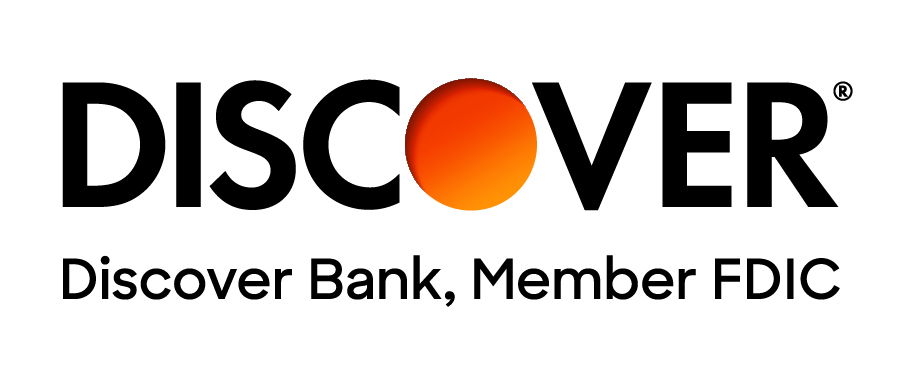Getting a credit card in college can be a smart move for students. It’s not just about making purchases—it’s about building a solid credit history. This can make a big difference later when you’re trying to rent an apartment, buy a car, or apply for loans. Starting early with good credit helps boost your score, which can lead to better interest rates and financial opportunities in the future.
Using a credit card responsibly—by making timely payments and keeping balances low—can instill good financial habits and awareness of managing debt. Ultimately, a credit card can serve as both a learning tool and a strategic advantage for college students as they learn about money management.
Students New to Credit
For college students who are new to credit, it’s important to understand why they often lack credit history and what that means for their financial future. One of the primary reasons is the absence of a financial history. Many students are just beginning their financial experiences, and without any past borrowing or credit usage, they have little to no credit report established. This can be particularly challenging when seeking loans or other forms of credit, as lenders typically rely on credit history to assess risk.
Students often face limited income sources, as many are working part-time jobs or relying on financial aid to support their education. This reduced income can make it difficult to qualify for credit cards since issuers generally prefer applicants who have a stable source of income to ensure they can repay their debts.
Without existing credit accounts, such as loans or another credit card, students find themselves in a catch-22 situation: they need credit to build a history, but they struggle to obtain credit due to the lack of that very history. Understanding these challenges is the first step toward making informed decisions about using and managing credit wisely.
The CARD Act of 2009
The CARD Act of 2009, or the Credit Card Accountability, Responsibility, and Disclosure Act, was enacted to protect young consumers from unfair credit card practices. It introduced several key provisions, such as requiring clearer disclosure of terms, limiting fees, and preventing sudden interest rate hikes.
For college students, this act is particularly important because it restricts credit card issuers from marketing aggressively on campuses and requires individuals under 21 to have a co-signer or proof of income to qualify for a card. This helps young adults avoid accumulating debt they can't manage and encourages responsible credit use.
How College Students Can Build Their Credit
Building credit as a college student is a crucial step toward achieving financial independence and creating a solid foundation for future financial endeavors. Here are some effective strategies to establish and improve credit:
- Becoming an Authorized User: One of the simplest ways to start building credit is by becoming an authorized user on a parent’s credit card. This allows students to benefit from the account's credit history without the responsibility of making payments. It’s important that the primary cardholder maintains a good payment record, as this will directly impact the student’s credit score.
- Opening a Student Credit Card Account: Many banks offer credit cards specifically designed for students. These cards often come with lower credit limits and fewer requirements, making them accessible for first-time credit users. By using a student credit card wisely—such as making small purchases and paying off the balance each month—students can gradually build their credit history.
- Using a Secured Credit Card: A secured credit card requires a cash deposit that serves as collateral. This can be a great option for students who may have difficulty qualifying for traditional credit cards. By using the secured card responsibly and making timely payments, students can effectively establish and improve their credit score.
- Paying Bills on Time and in Full: Whether it’s credit card bills, utility bills, or student loans, paying on time is essential. Payment history is one of the most significant factors influencing a credit score. Setting up reminders or automatic payments can help ensure that bills are always paid promptly.
- Keeping Credit Utilization Low: Credit utilization—essentially the amount of credit used compared to the total available credit—is another crucial component of a credit score. It’s advisable to keep credit utilization below 30%. By using only a small portion of their available credit and paying the balance in full each month, students can positively impact their credit score.
By incorporating these practices into their financial routines, college students can efficiently start building their credit, setting themselves up for a prosperous financial future.
Applying for Credit Cards
When college students consider applying for credit cards, it's crucial to be prepared with the necessary documentation that lenders typically require. This often includes a valid form of identification, such as a driver's license or passport, as well as proof of income, which could be a pay stub or bank statements indicating any part-time employment or financial aid support. Having this documentation ready can facilitate the approval process and demonstrate financial responsibility to potential issuers.
A good credit score is vital for students as it plays a significant role in determining the terms of credit they may receive. A higher credit score can lead to more favorable interest rates, which lowers the overall cost of borrowing. Conversely, students who lack a credit history might face higher interest rates when applying for credit cards, as lenders perceive them as a higher risk.
In some cases, students may need to enlist a co-signer—typically a parent or guardian—with an established credit history to increase their chances of approval. A co-signer agrees to take on the responsibility for repayment if the primary cardholder is unable to do so, which helps to reassure lenders about the reliability of the application.
While this can be a helpful strategy, it's essential for students to fully understand the implications of having a co-signer, as it can strain personal relationships if payment obligations are not met. Reviewing credit card applications with this knowledge can help students establish a positive financial trajectory.
Types of Credit Cards Available to College Students
Understanding the various types of credit cards available to college students is essential for making informed financial decisions. Here are three primary categories tailored to meet the needs of students:
- Student Credit Cards: These cards are specifically designed for individuals with limited or no credit history, making them an excellent option for college students just starting their financial journey. Student credit cards often offer benefits such as rewards programs for purchases made in categories like groceries or gas, as well as lower annual fees. By using these cards responsibly—by making small purchases and paying the balance in full each month—students can begin to build a positive credit history.
- Secured Credit Cards: For students who may have difficulty qualifying for standard credit cards, secured credit cards present a viable alternative. These cards require a cash deposit that serves as collateral, which also typically acts as the credit limit. Responsible use of a secured credit card, including timely payments and keeping balances low, can help students establish and improve their credit scores over time. This type of card can be particularly beneficial for those who want to build or rebuild their credit without taking on significant risk.
- Authorized User Status: Another effective way for students to build their credit is by becoming an authorized user on a parent’s or guardian’s credit card. This option allows students to benefit from the primary cardholder's established credit history without being responsible for making payments. It’s crucial, however, that the primary cardholder maintains a good payment record, as any missed payments can negatively impact the student’s credit profile. By leveraging this status wisely, students can gain valuable credit experience and strengthen their own credit profiles.
By considering these options, college students can choose the path that best aligns with their financial goals and start building a solid credit foundation for their future.
Applying for Credit Cards
The credit card application process can feel overwhelming for college students, but understanding the necessary steps can simplify the experience. First and foremost, students should research different credit card options tailored for their financial needs. Comparing interest rates, fees, and rewards can help determine which card will best suit their lifestyle.
Once students have chosen a card, they must gather the required documentation. Typically, this includes a valid ID, proof of income or financial support, and, in some cases, a Social Security number. Lenders use this information to assess the student's creditworthiness, so having clear and accurate documents is key.
When filling out the application, students should be honest about their financial situation and ensure that any provided information matches the documentation they've prepared. Applying online is often the most convenient option, allowing students to complete the process from the comfort of their own homes.
After submitting an application, students should remain patient. Approval may take a few days, and if denied, they should consider seeking feedback from the issuer to understand the reasons behind the decision. This feedback can be invaluable for improving their financial habits and increasing their chances of approval in the future.
By approaching the application process with diligence and preparedness, college students can successfully obtain a credit card that supports their journey in building credit and managing their finances responsibly.
Responsible Credit Card Use
Practicing responsible credit card use is crucial for college students looking to build a solid financial foundation. One of the most effective strategies is budgeting and tracking expenses. Students should create a monthly budget that clearly outlines their income and expenditures, allowing them to allocate funds for credit card payment while avoiding overspending. By regularly reviewing their spending habits, students can identify areas where they can cut back, ensuring they stay within their financial limits.
Paying the full balance each month is essential to prevent accumulating interest, which can make credit card debt grow quickly. Students should aim to treat their credit card like a debit card—only using what they can afford to pay off immediately. Understanding the credit card's terms and conditions, including interest rates and fees, empowers students to make informed decisions—helping them avoid any unexpected costs.
It’s vital for students to avoid maxing out their credit limit. Not only does doing so negatively impact their credit score, but it also places them at risk of falling into debt. A good rule of thumb is to keep credit utilization below 30% of the available credit limit.
Monitoring credit reports regularly is an essential aspect of responsible credit card use. By checking their credit reports at least annually, students can stay informed of their credit status, identify any discrepancies, and track their progress over time. These practices not only help in maintaining a healthy credit score but also instill lifelong financial habits that will serve them well beyond their college years.








